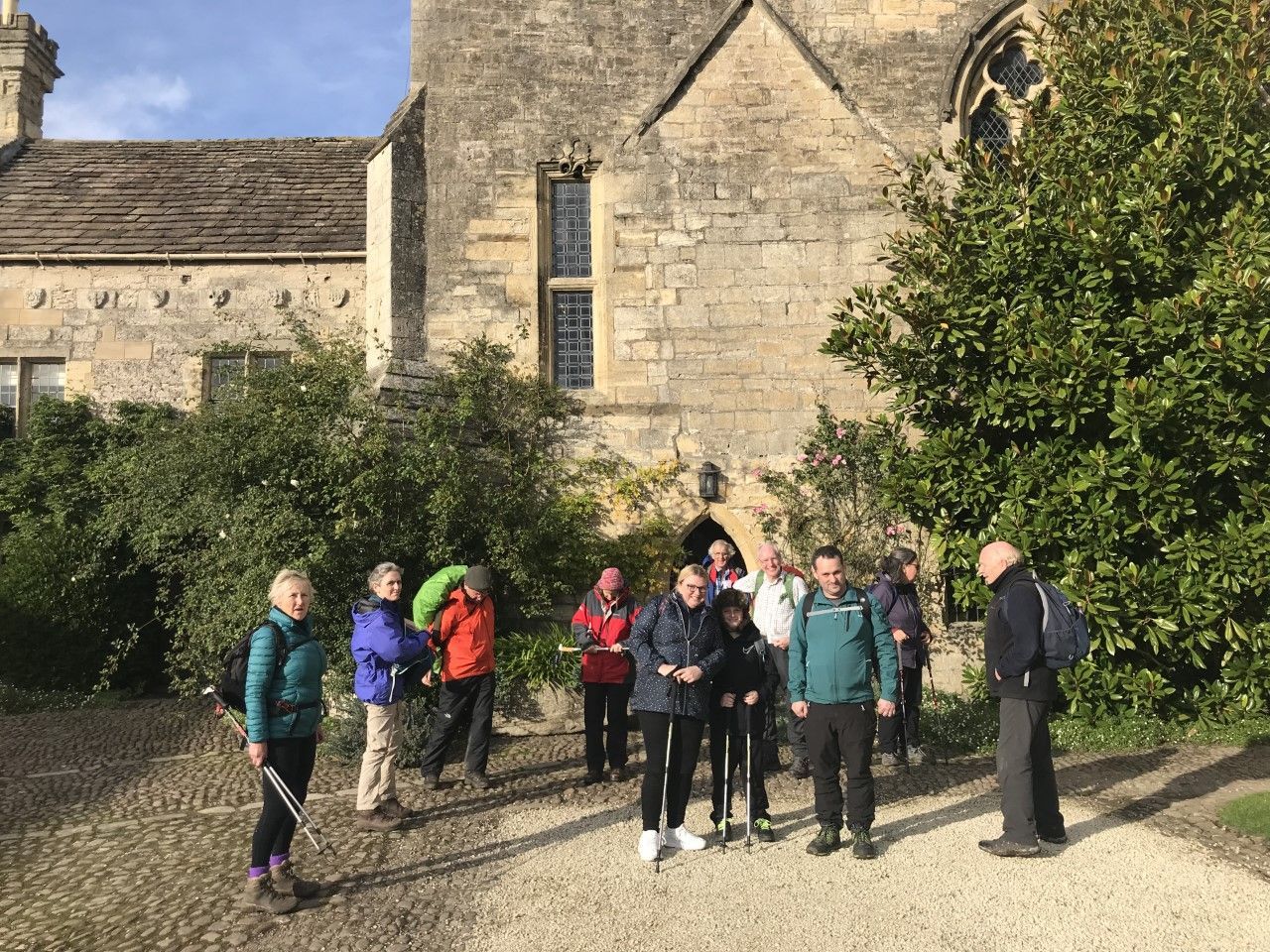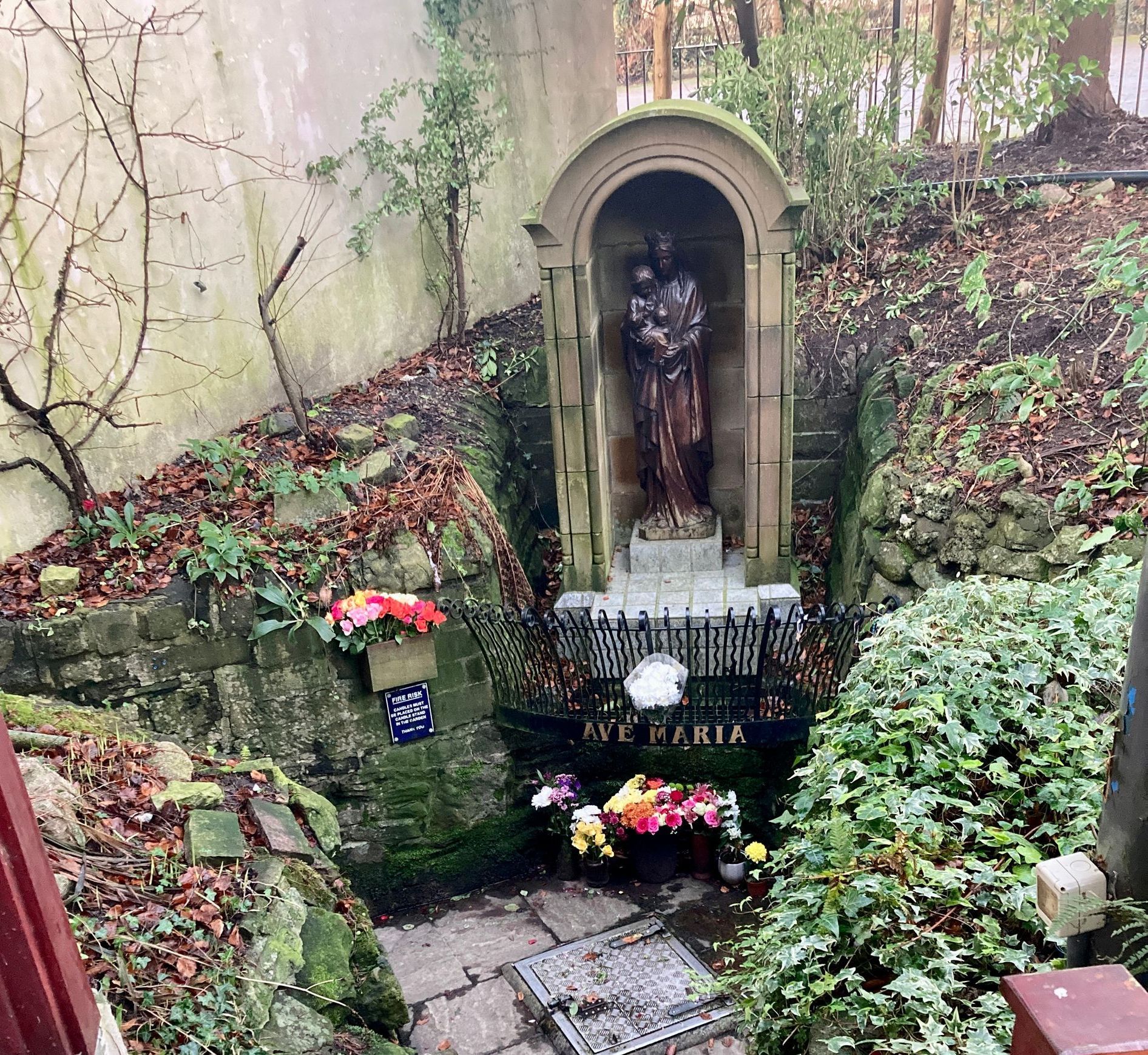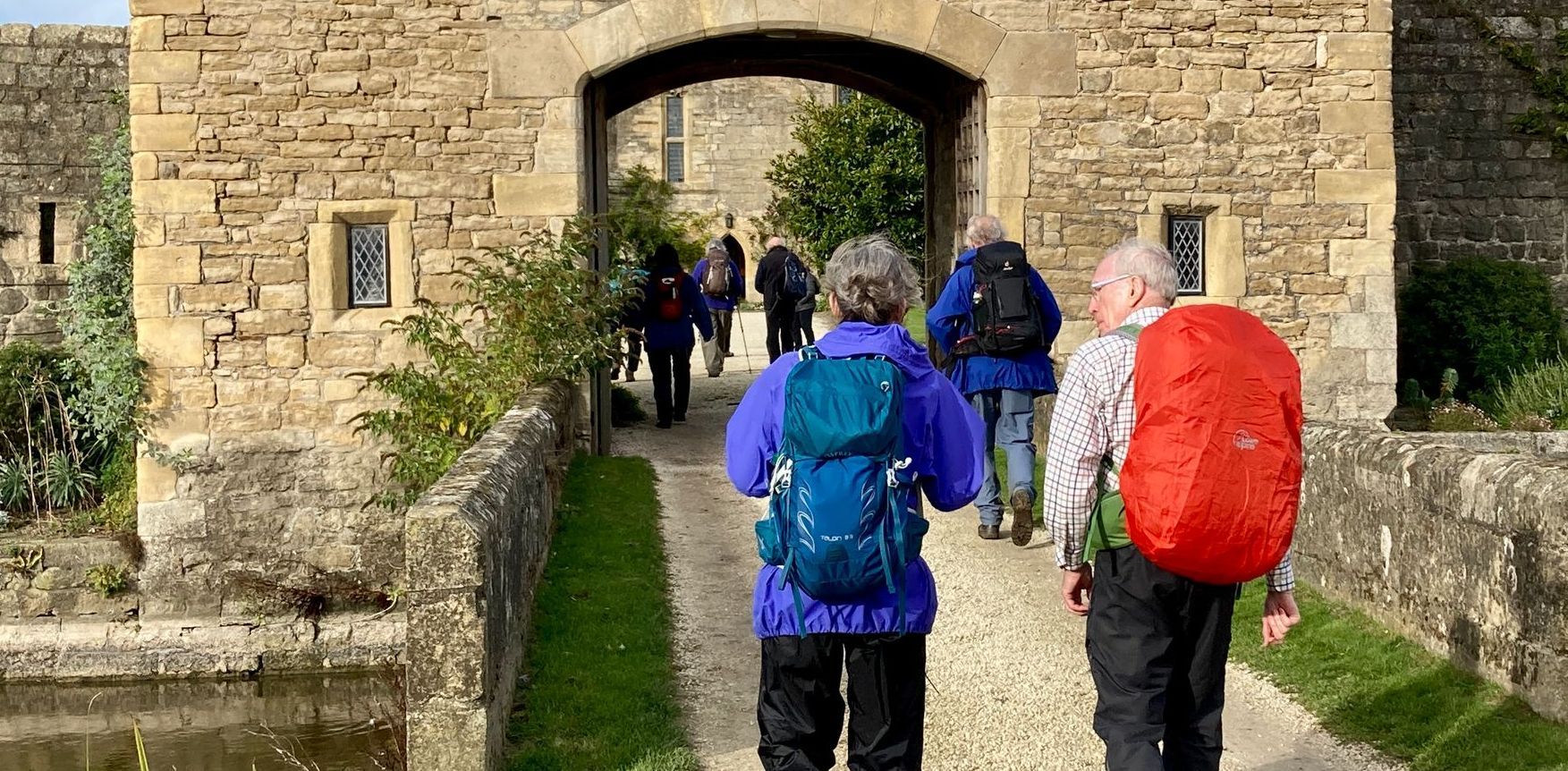The Way of Our Lady of Fernyhalgh & St Alphonsa
A Pilgrim Way for the Diocese of Lancaster from the Cathedral of St Peter in Lancaster to the Shrine of Our Lady at Fernyhalgh and on to the Syro-Malabar Cathedral of St Alphonsa in Preston
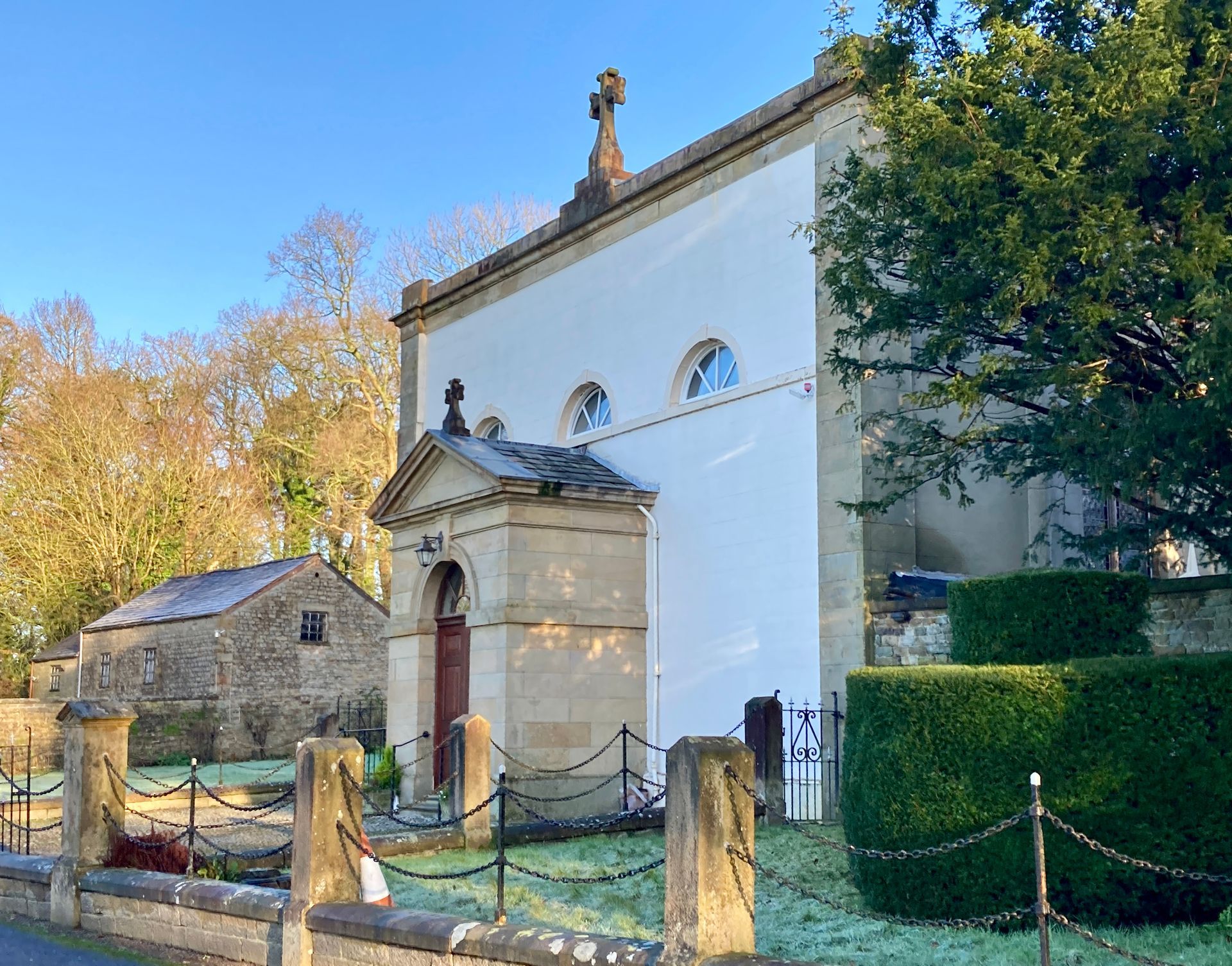
The Church of St Thomas the Apostle at Claughton
About the route
The Ladyewell shrine has long been a site of Marian devotion in Lancashire, stretching back to the C11. It is a witness to the perseverance of faith, even through times of great trial. Saint Alphonsa was an Indian nun and educator. She is the first woman of Indian origin to be canonized as a saint by the Catholic Church, and the first canonized saint of the Syro-Malabar Catholic Church.
The route follows the Lancaster Canal towpath south from the Cathedral out of the City, passing the Polish Church of Our Lady Queen of Poland. The path leaves the canal to reach the cycle path to Condor Green where it heads east to re-join the Canal to reach Garstang. After visiting the Church of SS Mary & Michael the route continues south and then east to cross the M6.
The route passes through farmland to reach the Church of St Thomas the Apostle at Claughton. The Way then visits the Church of St Francis, Hill Chapel near Goosnargh, and the Church of St Mary at Fernyhalgh. Shortly afterward the Ladywell Shrine is reached. The route continues into Preston to the churches of St Thomas of Canterbury & the English Martyrs, St Walburge, St Wilfrid and finally St Alphonsa’s Cathedral of the Syro-Malabar Eparchy of Great Britain. The route is mainly flat, easy walking.
You can find out more about the Way and download the GPX file by clicking on the LEARN MORE tab in the
interactive map below
Guidance
Using the tabs in this section you can find the information you need for your pilgrimage.
The Outer Way provides practical advice about the route.
The Inner Way describes the spiritual highlights.
Using the button below you can download details of the inner and outer ways and the walking guidance and maps.
Stages: route, food & drink, accommodation and public transport
1. Lancaster Cathedral to Condor Green: 4.6 miles
The route follows the canal, then crosses farmland to reach the River Lune cycle track all the way to Condor Green. The Cathedral can be reached by foot or bus from the Lancaster train and coach stations. There are plenty of shops, cafés, restaurants and accommodation in Lancaster. At Condor Green there is a pub, the Stork Inn, and a hotel just south by the canal lock. There are buses back to Lancaster from outside the Stork.
2. Condor Green to Garstang: 10.4 miles
The route crosses farmland to reach the Lancaster Canal and follows the towpath all the way to Garstang. In the town there is a large supermarket by the path and plenty of shops, cafés and pubs in the centre. There is a hotel at the golf club just to the south, and there may be Airbnb accommodation. There are buses to Preston and Lancaster.
3. Garstang to Claughton: 3.7 miles
The route follows the canal initially then farmland to reach Claughton. There are no facilities but there is a bus service to Garstang (check timetable, links below). NB there is a another Claughton in Lancashire, northeast of Lancaster – be careful not to confuse them!
4. Claughton to the Church of St Francis, Hill Chapel: 4.6 miles
The route crosses quiet farmland. There is a pub at Inglewhite and a farm shop which does hot and cold food at Lower Beesley beside the path (NB check opening times for both). There is a bus stop in Inglewhite.
5. St Francis, Hill Chapel to the Ladyewell Shrine, Fernyhalgh: 4.7 miles
The path is through quiet farmland. There are pubs at Goosnargh and on the B5269 by the path. There may be Airbnb in Goosnargh. There are buses from Goosnargh to Preston.
6. The Ladyewell Shrine, to the Cathedral of St Alphonsa, Preston 5.8 miles
Once over the M6 the route approaches central Preston along a green corridor. There are many cafés, restaurants and pubs and some budget accommodation in Preston. The bus network can be accessed at several points enroute. There are railway and coach stations.
Public transport links
Trains:
https://www.nationalrail.co.uk/
Coaches:
https://www.nationalexpress.com/en
Buses:
https://www.lancashire.gov.uk/roads-parking-and-travel/public-transport/bus-timetables/
Pilgrim people and places
NB if you wish to visit any of the churches you should check the parish website and/or office in advance to see if the church will be open, or if anyone could be available to let you in.
The Cathedral of St Peter, Lancaster
Lawful Catholic worship in Lancaster started with the building of a chapel (now the Palatine Hall) in Dalton Square in 1799. By 1847 this chapel had become too small for the growing congregation, and a 3-acre plot was bought at Greenfield. The school, convent and cemetery were built first. The new church was consecrated and dedicated in 1859. It is a fine building of warm buff stone with a tall steeple. The interior is light and well proportioned. In 1924 the Liverpool diocese was divided, and St Peter’s became the Cathedral for the new Diocese of Lancaster.
The Church of Our Lady Queen of Poland, Lancaster
In 1949, a Polish Catholic parish was established in Lancaster and Masses were held in a farm building in Meeting House Lane, Lancaster. In 1984 the church on Nelson Street was opened. Masses in Polish are said regularly and there is a community centre. The Polish Catholic Mission in England and Wales began in 1853. After WW2 the pastoral task extended to almost 200,000 displaced Poles, mainly service men. Numbers increased following the imposition of martial law in Poland in 1981 and again in 2004 after Poland’s accession to the EU. Today the Mission includes nearly 70 parishes and Mass is celebrated regularly in Polish in over 200 towns.
The Church of St Mary & St Michael, Garstang
St John Plessington was born at Dimples Hall, Garstang in 1637 and martyred in 1679 on Gallows Hill, Boughton, Cheshire. The first Catholic chapel in Garstang after the Reformation was built in the town centre about 1790 and survives today as a magistrates’ training centre. The present church, presbytery, school and schoolmaster’s house were built in 1857-8, at the same time as the larger church of St Peter, Lancaster (now the Cathedral) to designs by the same architect. The tower is topped by an eccentric small spire. Inside there is an elaborate marble high altar and reredos, with painted figures of the apostles, marble altar rails with brass gates and a large oil painting on the south wall of the nave of the crucifixion.
The Church of St Thomas the Apostle, Claughton
Catholicism was sustained here during the penal years by Brockholes (later Fitzherbert-Brockholes), local recusant landowners. The present church was completed in 1794, only three years after the Second Relief Act. Before this, Mass was said in the adjoining rectory house where the drawing room had been adapted for this in 1744-5. Alterations to the church were carried out in 1835 under Fr Henry Gradwell. He was also responsible for the building of the nearby school in 1853. In 1872 Thomas Fitzherbert-Brockholes gave the land for the present cemetery at the rear of the church. The church is in an idyllic rural setting. Although the exterior is plain, inside there are good-quality furnishings with a high altar surmounted by a colonnade housing the tabernacle supporting a domed cupola and cross.
The Church of St Francis, Hill Chapel, Goosnargh
The village of Goosnargh produced two Elizabethan martyrs: William Marsden was martyred on the Isle of Wight in 1586, while George Beesley died in Fleet Street in 1591. Beesley was born in what is now the presbytery and was beatified in 1987. The church is linked to two earlier buildings – the present presbytery (a former farmhouse) and school. A chapel is said to have been built on the south end of the farmhouse about 1755, which was extended in 1802 to form the present building. In 1835 the Benedictines from Ampleforth took over the mission and carried out further alterations. The interior is in the unassuming chapel style typical of Catholic churches in the immediate post-Relief Act years. There is abstract coloured modern glass in all the windows.
The Church of St Mary, Fernyhalgh
Fernyhalgh is one of the oldest sites of continuous Catholic devotion in Lancashire because of the nearby Ladyewell Shrine which was established in the mid-C14. The church was built soon after the Relief Act of 1795 by Revd Dr Lund who also had the linked priest’s house built. The church is in the typical chapel style of the period but was much altered by the Revd Richard Gillow, who took charge in 1823. He paid for the handsome school building, erected in 1835. In the southwest corner of the churchyard is the grave of the Revd James Finch, last of the English Carthusian monks (d 1821). Inside, the chancel was redecorated with wall paintings in the mid C19. Above the altar is an elaborate dome, painted deep blue and ornamented with gold stars with a dove at the centre.
Ladyewell House and Holy Well Shrine, Fernyhalgh
The Holy Well shrine is in the grounds of Ladyewell House. Since the Reformation, devotion to Our Lady as Queen of Martyrs has developed, and this is reflected at Ladyewell in the reliquary, the Burgess Altar and the chapel of the English Martyrs. There has never been an apparition of Our Blessed Lady at Fernyhalgh, just continued prayer and petition over 7 centuries. Apart from 5 years during penal times, the shrine has attracted pilgrims and been the focus of Catholic prayer. Between May and October the dioceses of Lancaster, Liverpool and Salford hold their annual pilgrimages. Syro-Malabar Catholics and Irish travellers visit throughout the year, and devotion at Ladyewell is ecumenical, attracting Anglican and Orthodox Christians, as well as people of other faiths.
Preston: ‘poor, proud and Papist’
Preston was a Catholic stronghold during penal times. The Preston mission was served by the Society of Jesus (Jesuits) from 1701, and the town was the site of much turbulence during the Jacobite uprising. The industrial revolution affected the Church profoundly. By 1835 there were 40 mills in the town and the Catholic population grew rapidly through Irish immigration, accelerated by the Great Irish Famine of 1845-52. Many impressive churches were built to serve the Catholics of the town but the parishes now struggle with smaller congregations. Demographic change continues, and today Preston is home to the Cathedral of the Keralan Catholic Syro-Malabar community.
The Church of St Thomas of Canterbury & the English Martyrs
This mission was established in 1864. After a short period in which a temporary chapel was used, the present site (then known as Gallows Hill and the site of executions at the time of the 1715 rebellion) was obtained. EW Pugin prepared ambitious proposals which had to be scaled down. The uncompleted church was opened in December 1867. In 1888 the church was enlarged at the east end of the nave and sanctuary. With town centre depopulation in the 1950s & 60s Mass attendance declined and the nave was reduced by the creation of a narthex and baptistery at the west end in 1965. Following a fire in 2000, repair work included the conversion of the confessionals and a corridor area to form a community room. The parish is amalgamated with St Walburge’s (see below).
The Shrine Church of St Walburge, Preston
St Walburge was a daughter of St Richard, a West Saxon king. With her two brothers, SS Willibald and Winibald, she went to Germany as a missionary. The church is in the former heart of cotton manufacturing in Preston. In 1847 the Jesuits commissioned JA Hansom to design the church. It opened in 1854 but the tower was not built until 1857 and an impressive limestone spire added in 1867. The wide nave, with its hammerbeam roof, is a remarkable accomplishment. The Jesuits handed the building to the Diocese of Lancaster in 1955. Since 2014 it has been a shrine church run by the Institute of Christ the King, a priestly society founded in 1990 by Mgr Gilles Wach and Fr Philippe Mora in Gabon, Africa. The Institute’s charism includes use of the traditional Latin Liturgy, fidelity to the doctrine of the Church and to the Pope. It operates in 12 countries.
The Church of St Wilfrid, Preston
In 1776 Fr Joseph ‘Daddy’ Dunn SJ arrived at Preston to help lead the Preston mission. He was a priest, chemist and entrepreneur who introduced the distribution of coal-gas throughout Britain. Preston became the second town in the UK to be fully gas-lit. In 1792 Dunn oversaw the building of a new chapel in Fishergate for the Jesuits. Opened in 1793, this became the Church of St Wilfrid. It was a nonconformist-style galleried church but in 1890 the plain external walls of the building, incorporating much of the 1793 chapel, were adorned with decorative terracotta, stone and brick detail, in an Italian Renaissance style. The interior was embellished with red marble columns mounted on black marble plinths, a barrel-vaulted ceiling, marble cladding to the walls and apse, and mosaic portraits of saints. The parish remains in the care of the Jesuits.
The Syro-Malabar Catholic Cathedral of St Alphonsa, Preston (formerly the Church of St Ignatius)
St Ignatius’ was the 3rd chapel built by the Jesuits to serve the burgeoning Irish immigrant population of Preston, but it soon became too small and had to be enlarged. It is a Gothic Revival church with later adaptations by major C19 Catholic architects. The spire is a major landmark in the town. The poet Francis Thompson was baptised here in 1859, and the Jesuit priest and poet Gerard Manley Hopkins was curate in the late 1880s. The Jesuits moved on and in 2014 the church was closed. In 2015 it became the Cathedral of the Catholic Syro-Malabar community in Great Britain, and Masses are celebrated in that rite.
The Syro-Malabar Church is an Eastern Catholic Church based in Kerala, India, in full communion with the Pope and the worldwide Catholic Church. The Church traces its origins to St Thomas the Apostle in the C1 and uses the East Syriac Rite liturgy. It is headed by the Major Archbishop of the Syro-Malabar. Significant migration of Syro-Malabar people to the UK occurred from 2000 onwards. In 2016 Pope Francis established the Syro-Malabar Eparchy of Great Britain. There are 68 priests serving 4 parishes, 52 missions, 30 proposed missions and nearly 50,000 Syro-Malabar Catholics in Great Britain.
ABOUT THE DIOCESE OF LANCASTER
The Diocese was established in 1924, taking areas and parishes from the Archdiocese of Liverpool and the Diocese of Hexham and Newcastle. It extends along the west of England from the Ribble River in the south of Preston to the Scottish border, comprising the counties of Cumbria and much of Lancashire. The diocese has around 90 active priests, 50 permanent deacons, 12 secondary schools, over a hundred primary schools and a similar number of parishes.
Areas in the diocese include the city of Preston; a city with a high Catholic population due in part to the fact that the Protestant Reformation never took hold in Preston to the same extent as it did in other places.
